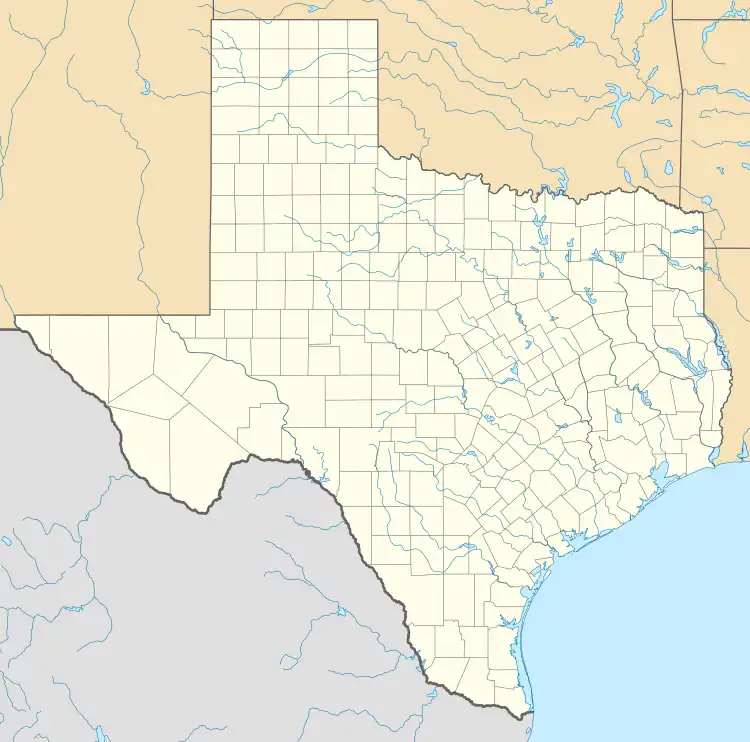Sam Rayburn, Texas | |
|---|---|
 Sam Rayburn  Sam Rayburn | |
| Coordinates: 31°03′51″N 94°02′09″W / 31.06417°N 94.03583°W | |
| Country | United States |
| State | Texas |
| County | Jasper |
| Area | |
| • Total | 9.931 sq mi (25.72 km2) |
| • Land | 8.469 sq mi (21.93 km2) |
| • Water | 1.462 sq mi (3.79 km2) |
| Elevation | 200 ft (60 m) |
| Population | |
| • Total | 1,273 |
| • Density | 130/sq mi (49/km2) |
| Time zone | UTC-6 (Central (CST)) |
| • Summer (DST) | UTC-5 (CDT) |
| Area code | 409 |
| GNIS feature ID | 2035025[2] |
Sam Rayburn is a census-designated place and unincorporated community in Jasper County, Texas, United States. Its population was 1,273 as of the 2020 census.[3] The community, which is also known as Rayburn Country, is located on the south shore of the Sam Rayburn Reservoir at the junction of Texas Recreational Road 255 and Farm to Market Road 1007.[4] Sam Rayburn was founded in the 1970s after the formation of the reservoir; its main attraction is its country club, Rayburn Country.[5]
Demographics
| Race | Number | Percentage |
|---|---|---|
| White (NH) | 1,183 | 92.93% |
| Black or African American (NH) | 10 | 0.79% |
| Native American or Alaska Native (NH) | 5 | 0.39% |
| Asian (NH) | 1 | 0.08% |
| Pacific Islander (NH) | 2 | 0.16% |
| Some Other Race (NH) | 3 | 0.24% |
| Mixed/Multi-Racial (NH) | 38 | 2.99% |
| Hispanic or Latino | 31 | 2.44% |
| Total | 1,273 |
As of the 2020 United States census, there were 1,273 people, 429 households, and 315 families residing in the CDP.
References
- ↑ "US Gazetteer files: 2010, 2000, and 1990". United States Census Bureau. February 12, 2011. Retrieved April 23, 2011.
- 1 2 U.S. Geological Survey Geographic Names Information System: Sam Rayburn, Texas
- 1 2 "U.S. Census website". United States Census Bureau. Retrieved May 14, 2011.
- ↑ County Grid Map Page 609 (PDF) (Map). Texas Department of Transportation. 2010. Retrieved July 21, 2012.
- ↑ Jasinski, Laurie E. "Sam Rayburn, TX". Handbook of Texas. Texas State Historical Association. Retrieved July 21, 2012.
- ↑ "Explore Census Data". data.census.gov. Retrieved May 25, 2022.
- ↑ https://www.census.gov/
- ↑ "About the Hispanic Population and its Origin". www.census.gov. Retrieved May 18, 2022.
This article is issued from Wikipedia. The text is licensed under Creative Commons - Attribution - Sharealike. Additional terms may apply for the media files.
